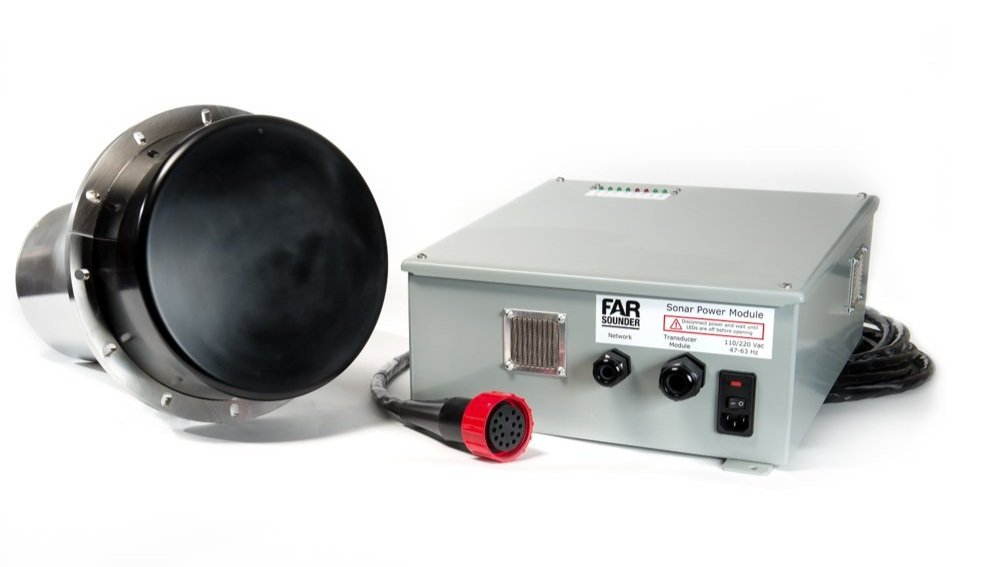Upgrading an FS-3DT to an Argos 500
Argos 500 Hardware
In September 2012 we launched our Argos 500 3D navigation sonar (then called FarSounder-500). This system replaced our legacy FS-3DT product and offers longer range, wider field of view at long range, and better image quality than its predecessor. The Argos 500 has the same mechanical footprint as the FS-3DT. It uses the same transducer array and stainless steel pressure case which means existing legacy FS-3DT users can easily upgrade their system to a Argos 500 for a fraction of the cost of a new Argos 500. Upgrading to our latest product allows existing customers to take advantage of the newest software features which offer a significantly improved user experience as compared to the FS-3DT. Let us walk you through the processes.
What’s New in an Argos 500?
Navigation sonar operating near shore
Though the Argos 500 Transducer Module uses the same transducer array as the FS-3DT, the internal electronics are completely redesigned. The new generation of electronics allows FarSounder’s software to unleash more of the array’s capabilities. In technical terms, the Argos 500 has more than three times the usable bandwidth, about 40 dB better out-of-band noise rejection, lower system noise, and better transmit electronics than our legacy products. In practical terms, this means that the Argos 500:
can detect objects out to 500 meters (¼ nautical mile) range with the system’s full 90 degree field-of-view,
has about three times the range resolution, making images crisper and easier to understand, and
can suppress interference from other noise sources and sonars better.
Additionally, though we’ve been supporting our legacy products with software updates, an Argos 500 or Argos 1000 is required to take full advantage of the major software updates that are available.
In addition to upgrading the Transducer Module, the Power Module is replaced with our latest bulkhead mounted model. The existing cable can be reused; though a new one can always be installed. Depending upon the bridge computer’s specifications, a computer upgrade may also be required. Review our current computer specifications to see if this is also needed. The bridge computer can be supplied by FarSounder or sourced directly by the customer.
The Upgrade Process
Cable Cap
We’ve tried to make the upgrade process as painless as possible. All of our Transducer Modules have been designed to be removed and reinstalled with a diver. This means that existing customers don’t need to wait until dry dock to upgrade the system. While the Transducer Module is removed from the vessel, the wet end of the cable should be capped with a dummy plug to prevent sediment and debris from fouling the conductors.
A Transducer Module being lowered into FarSounder's old acoustic test tank
Customers then send the Transducer Module and Power Module back to FarSounder for refurbishing and upgrading. We clean, inspect, and test the returned units to confirm that the critical (and most expensive components) are still in serviceable condition.
After the electronics upgrade, the Transducer Module undergoes the same tank testing and calibration as all of our new Argos 500 Transducer Modules. The replacement Power Module is brand new. Though roughly the same size as our legacy units, its mechanical package has been updated to be bulkhead mounted.
Recommissioning and End User Training
Once the upgraded hardware returns to the vessel, the Transducer Module can then be reinstalled by diver. We can walk our customers through the process. We recommend that the newly installed Argos 500 be commissioned by a certified FarSounder technician and can also offer complimentary online end user training if that is desired.




